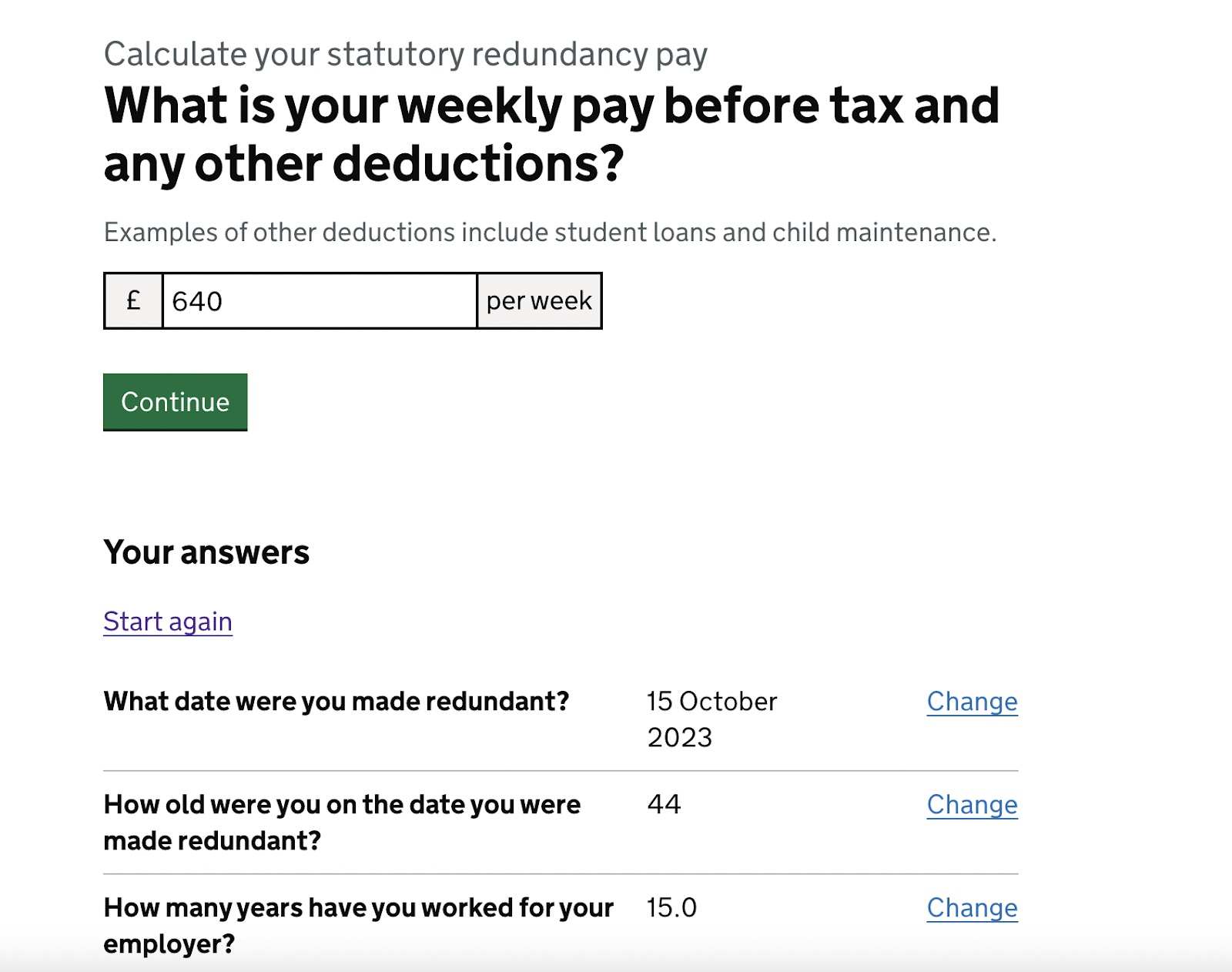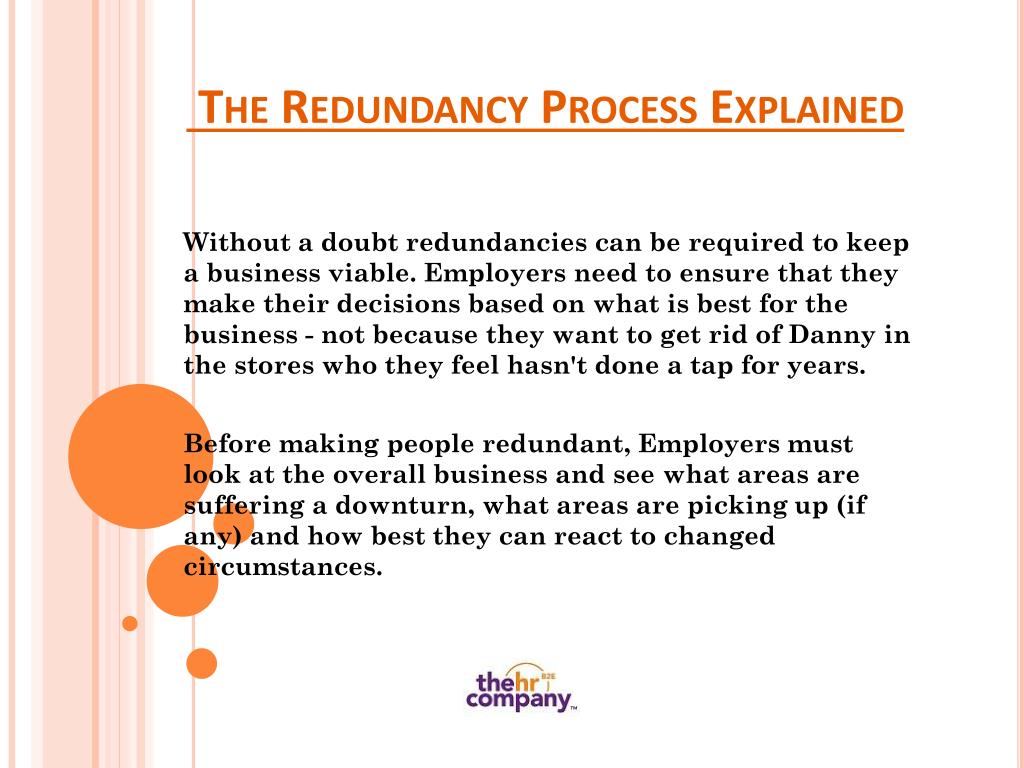Investigating the Interaction Between Business Redundancy and Business Flexibility for Future Growth
In the dynamic landscape of today's company world, the complex relationship between firm redundancy and organizational adaptability arises as a vital variable for sustained growth and success. Companies typically face the difficulty of striking a fragile equilibrium in between keeping a degree of redundancy to minimize threats and fostering adaptability to respond quickly to the ever-evolving market needs.
Value of Firm Redundancy
Firm redundancy is a critical component that boosts business durability and minimizes functional risks. By integrating redundancy steps within the organizational framework, companies can much better hold up against unforeseen disruptions and fluctuations in the business environment. Redundancy offers as a critical barrier, enabling business to adapt and respond effectively to unanticipated obstacles without jeopardizing necessary operations.
One key element of the significance of business redundancy is its role in ensuring connection during times of crisis. When encountered with unexpected changes or emergency situations, redundant systems, sources, or workers can step in to maintain critical features and avoid prevalent disruptions. This continuity not just safeguards the company's online reputation and client count on yet likewise minimizes economic losses and functional downtime.

Approaches for Business Flexibility

Developing adaptable organizational structures that allow for quick adjustments to market characteristics and client needs is important for staying affordable in a quickly evolving environment. By proactively recognizing possible interruptions and opportunities, companies can proactively adapt and flourish in an ever-changing company landscape.
Balancing Redundancy and Flexibility
Achieving a harmonious stability in between operational redundancy and organizational flexibility is paramount in navigating the intricacies of a vibrant business atmosphere. Striking the appropriate balance between redundancy and versatility is a fragile procedure that requires a deep understanding of the organization's goals, market characteristics, and threat resistance.
To achieve this equilibrium, firms require to perform normal analyses of their procedures to recognize locations where redundancy is necessary for threat reduction and where flexibility can drive technology and development. Applying adaptable frameworks, promoting a culture of continuous learning and improvement, and urging open interaction throughout all levels of the organization are key strategies to integrate redundancy and flexibility successfully. By lining up these two critical components, firms can place themselves for sustainable development and success in an ever-changing organization landscape.
Instance Research Studies on Adaptation Success
In checking out instances of successful organizational adaptation, it ends up being obvious that the interaction in between functional redundancy and flexibility is a specifying aspect in forming durable organizations. A DVD rental solution, Netflix showed impressive flexibility by transitioning right into a streaming system when digitalization interfered with the market. These situation research studies highlight the relevance of functional redundancy combined with organizational versatility in fostering long-term growth and competition.
Structure Strength for Future Development
Structure resilience for future development needs a strategic positioning of functional processes with market characteristics and emerging fads. Business have to adapt to transforming atmospheres by cultivating a culture of adaptability, development, and continual enhancement.
Furthermore, cultivating strong connections with stakeholders, such as customers, workers, distributors, and the neighborhood, is essential for weathering unpredictabilities and maintaining trust and assistance during stormy times. Effective interaction and openness play a vital function in structure resilience, as they assist straighten assumptions and help with partnership in browsing unpredictabilities.
In addition, organizations require to prioritize discovering and growth initiatives to upskill employees and furnish them with the needed devices to adjust to transforming conditions. By buying their labor force, companies can enhance their versatility and dexterity, inevitably reinforcing their strength for lasting future growth.
Final Thought

In the vibrant landscape of today's business world, the elaborate wikipedia reference relationship between firm redundancy and organizational versatility arises as a vital factor for continual growth and success. Business often deal with the obstacle of striking a fragile balance between preserving a degree of redundancy to mitigate dangers and promoting flexibility to react swiftly to the ever-evolving market needs.To more tips here attain this equilibrium, firms need to conduct routine analyses of their procedures to recognize areas where redundancy is necessary for danger reduction and where flexibility can drive development and growth.In conclusion, the interplay between business redundancy and business versatility is important for future growth. Structure strength with a mix of redundancy and flexibility will certainly make sure that business are prepared for the obstacles of the future.